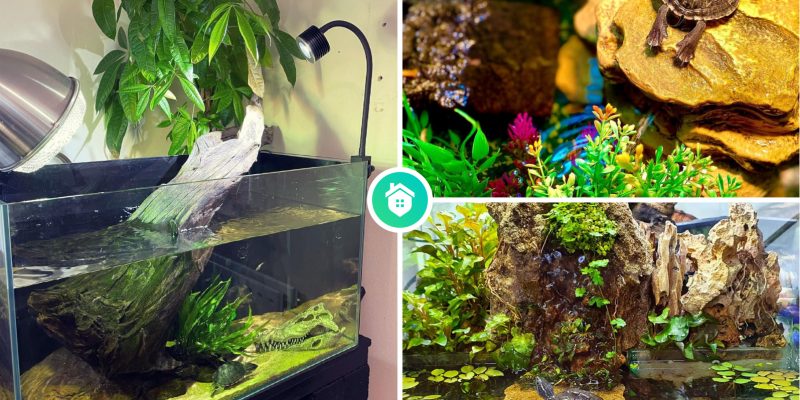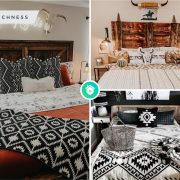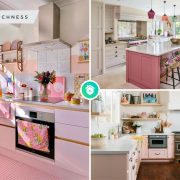Delving into the world of a turtle terrarium is like sculpting a personalized retreat for your shelled companion. It’s the art of creating a tiny ecosystem where your turtle can frolic in its watery domain, bask under a simulated sun, and navigate a landscape of carefully arranged rocks and plants. Imagine the satisfaction of watching your turtle weave through underwater vegetation or clamber onto a sunlit basking spot, each movement a testament to the thriving environment you’ve crafted. It’s not just about providing a home; it’s about curating an enchanting microcosm where the subtle rhythm of aquatic life blends with the joy of being a turtle enthusiast. With each addition to the terrarium, you’re not just setting up a habitat; you’re fashioning a living masterpiece, a dynamic canvas of life within the confines of glass walls.
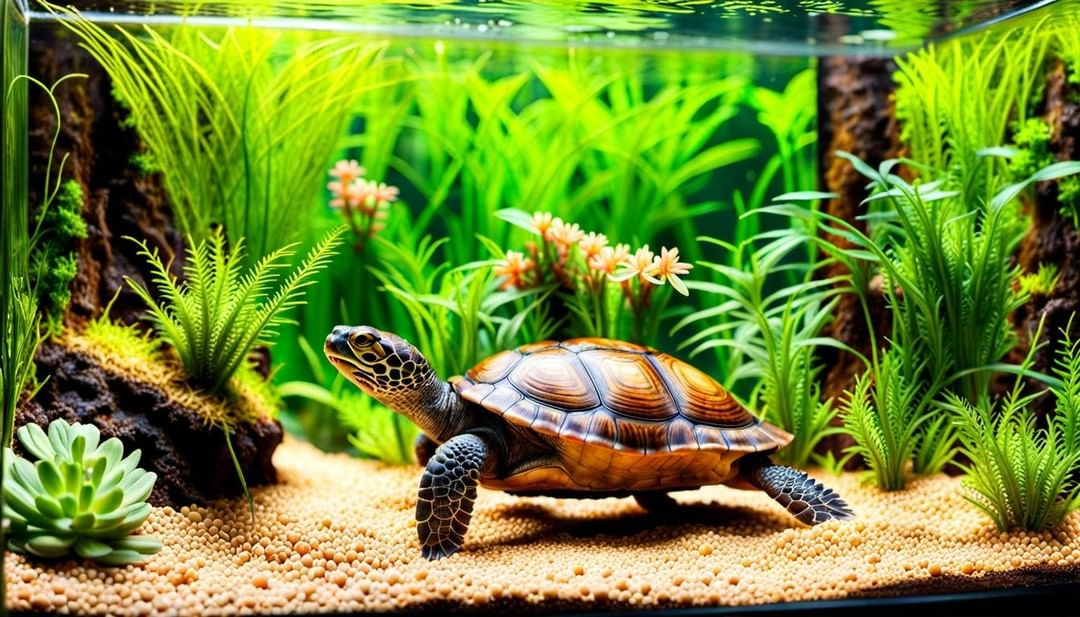
A vibrant, interesting turtle terrarium is infinitely better for both the turtle and its keeper. Turtle terrrarium from @ jbl.de
Before you start making a home for your turtle, it’s important to understand how your turtle likes to live. Different turtle species have their own ways of behaving, things they like, and specific needs. When it comes to creating a space for them, there are two main types of terrariums that work well: the aquaterrarium and the paludarium.
Aquaterrarium
An aquaterrarium is a specifically crafted living space for turtles, integrating features from both aquatic and terrestrial environments. This habitat offers a varied environment, enabling turtles to participate in water-based activities like swimming and underwater exploration, alongside providing a dedicated dry area for basking and leisure. Essential elements of an aquaterrarium comprise:
Aquatic Area:
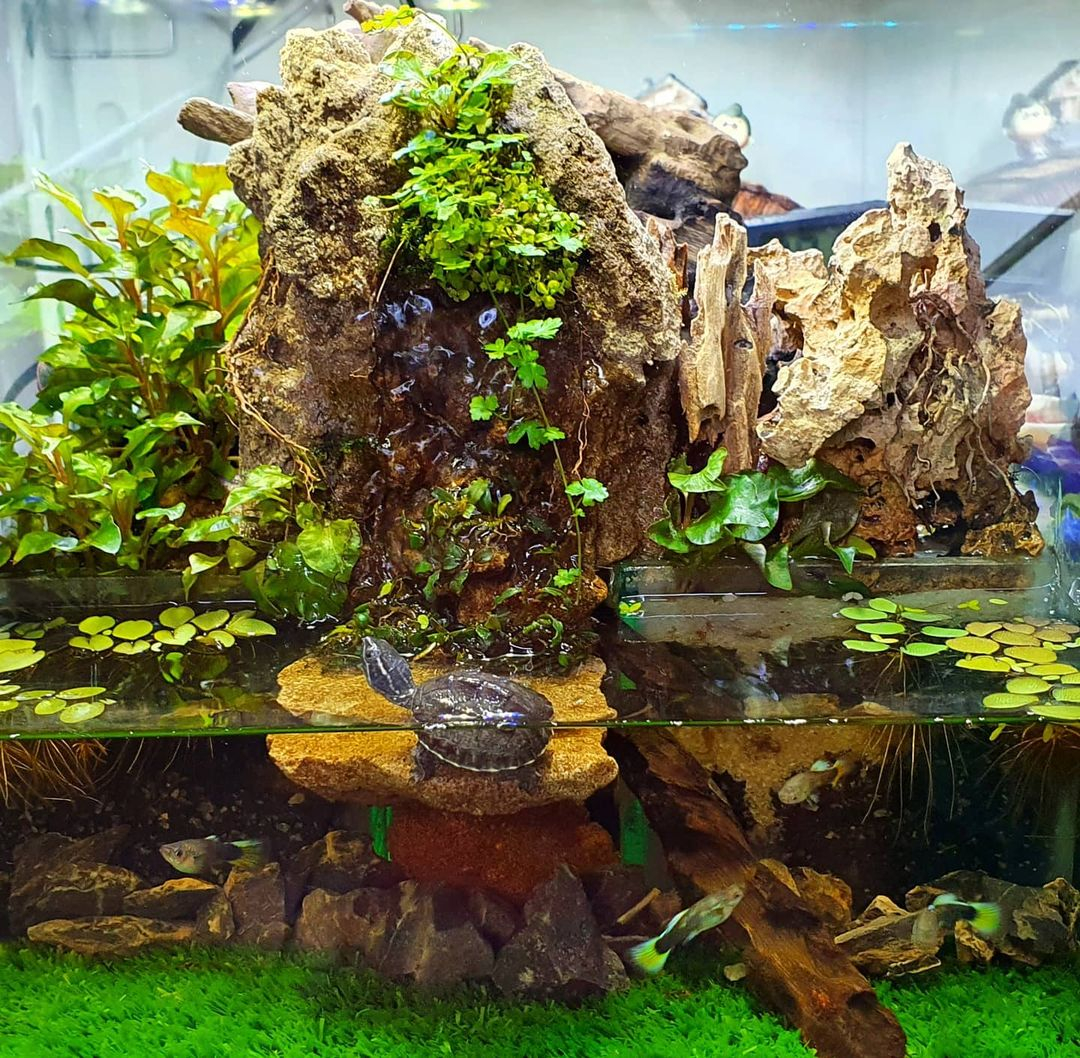
The aquatic area is customized to suit the specific needs and preferences of the particular turtle species being cared for. Aquaterrarium design from @
chandra.wijaya.s
A notable section of the habitat is allocated for a water region, and the depth of this aquatic area is tailored to meet the distinct requirements and preferences of the particular turtle species under care.
Basking Platform:
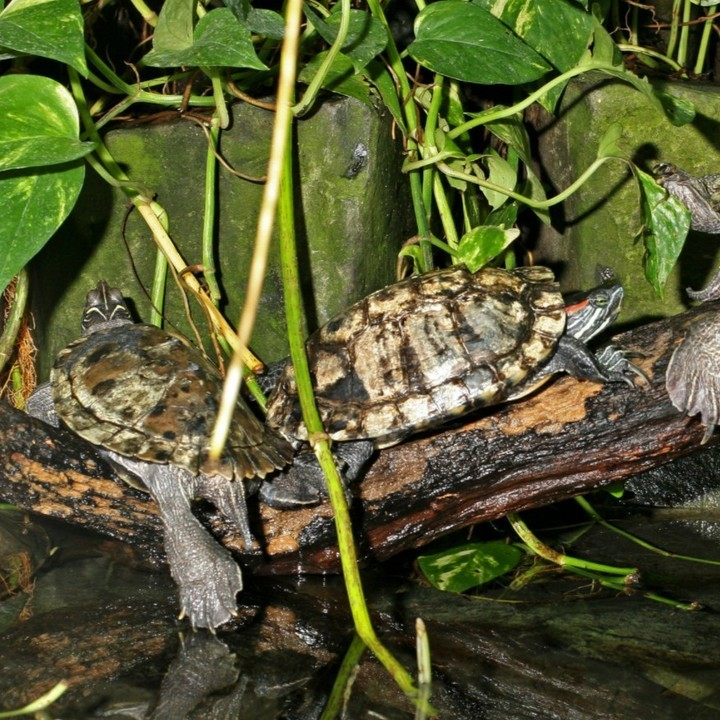
Ensuring your turtle has a reliable and easily reachable basking spot, allowing it to emerge from the water, dry off, and soak up the warmth, is absolutely essential. Driftwood from @ jbl.de
An essential feature is a sturdy and accessible basking platform where the turtle can climb out of the water to dry off and receive heat. This platform can be made of materials like cork, driftwood, or commercial turtle docks.
Substrate:
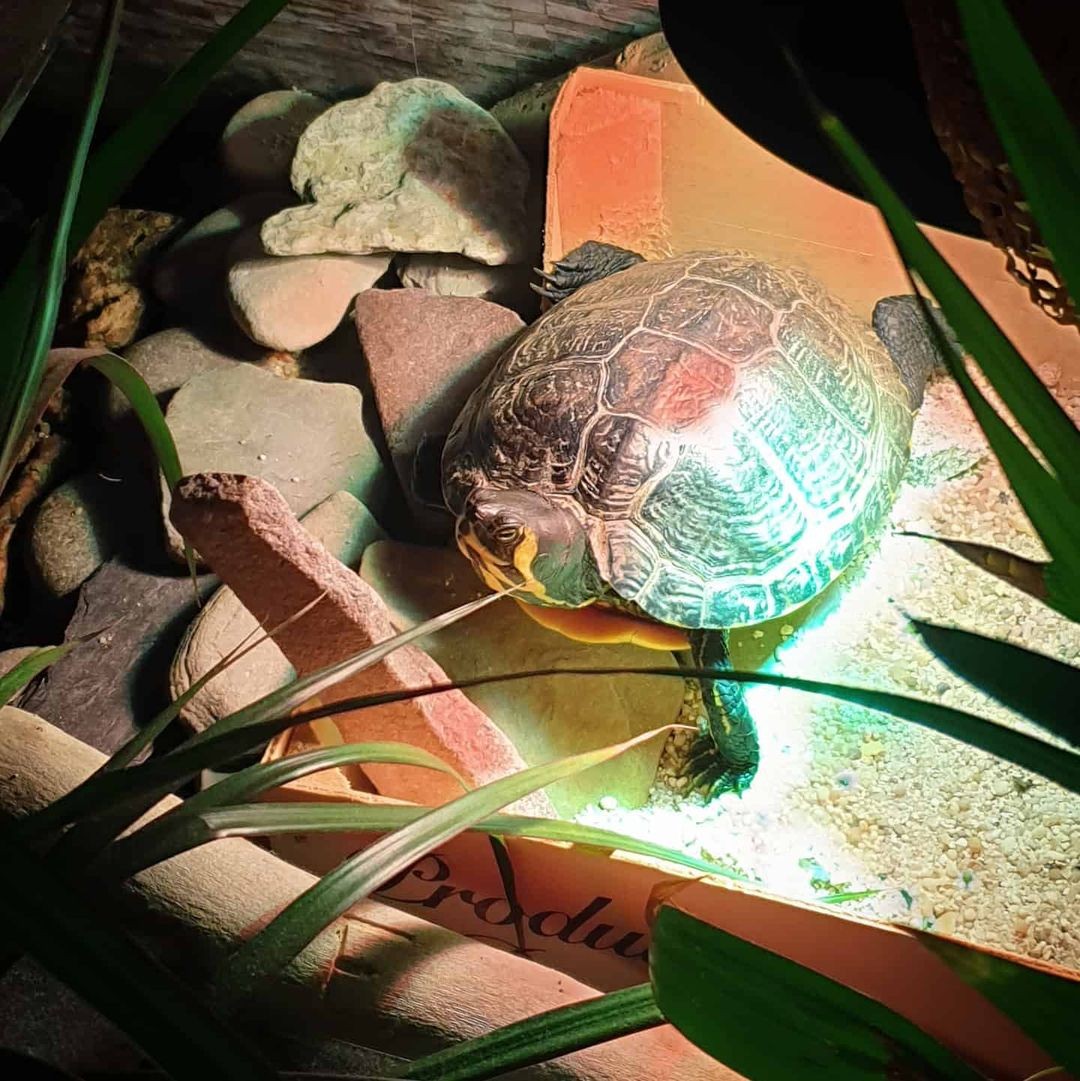
Incorporating a substrate enables the turtle to express its natural behaviors, such as digging and exploring. Turtle terrarium from @ theturtledojo
The substrate in the water area may include smooth gravel or river rocks. Providing a substrate allows the turtle to exhibit natural behaviors like digging and exploring.
Heating and Lighting:
A basking lamp is used to create a warm spot on the platform, mimicking the sun’s rays. Additionally, UVB lighting is essential for the turtle’s overall health, especially for shell development.
Filtration:
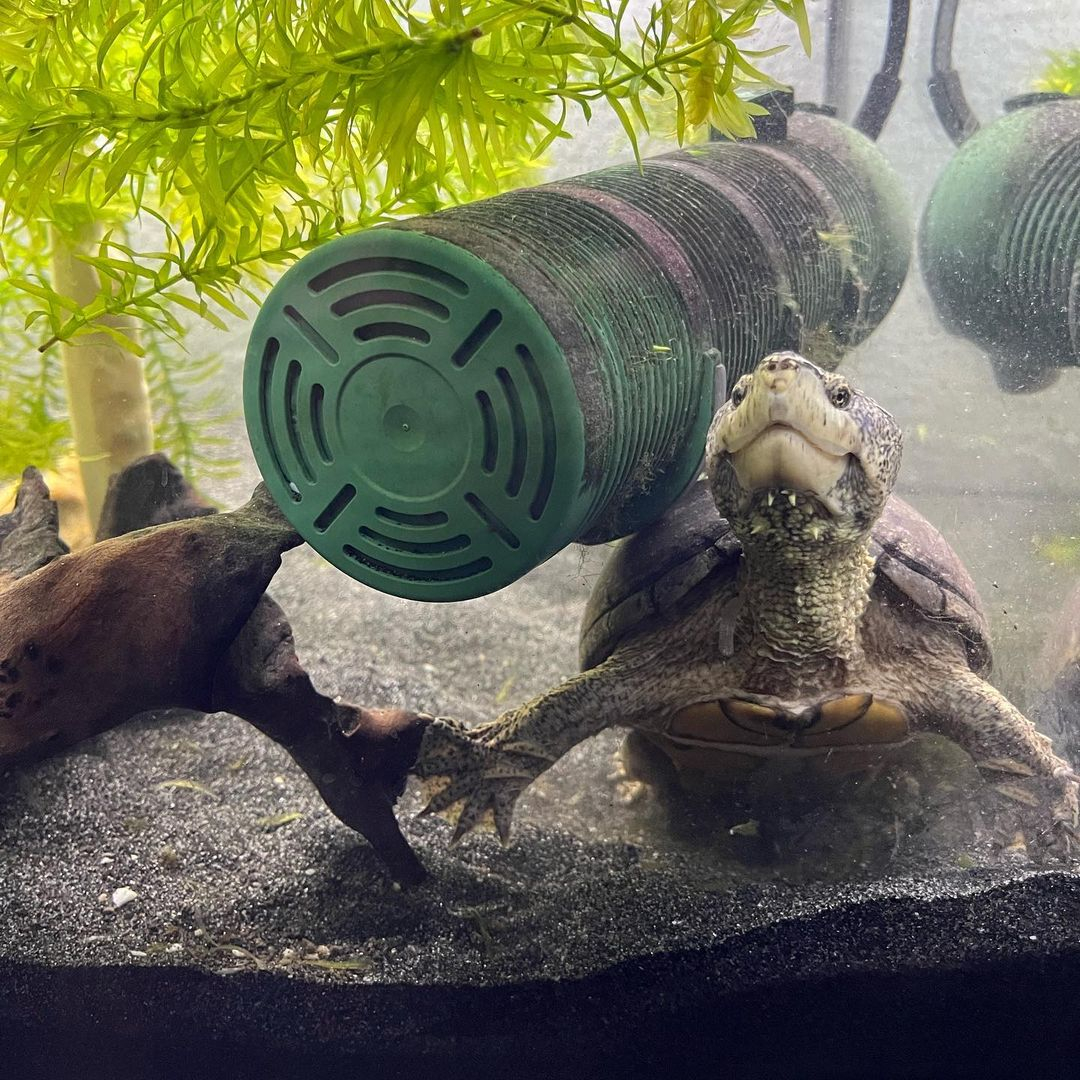
Effective filtration is essential for eliminating debris and ensuring a pristine and clean aquatic environment. Aquaterrarium from @ der_thadaeus
Due to the turtle’s waste production, a reliable filtration system is crucial to maintain water quality. Efficient filtration helps remove debris and keeps the aquatic environment clean.
Plants and Decor:
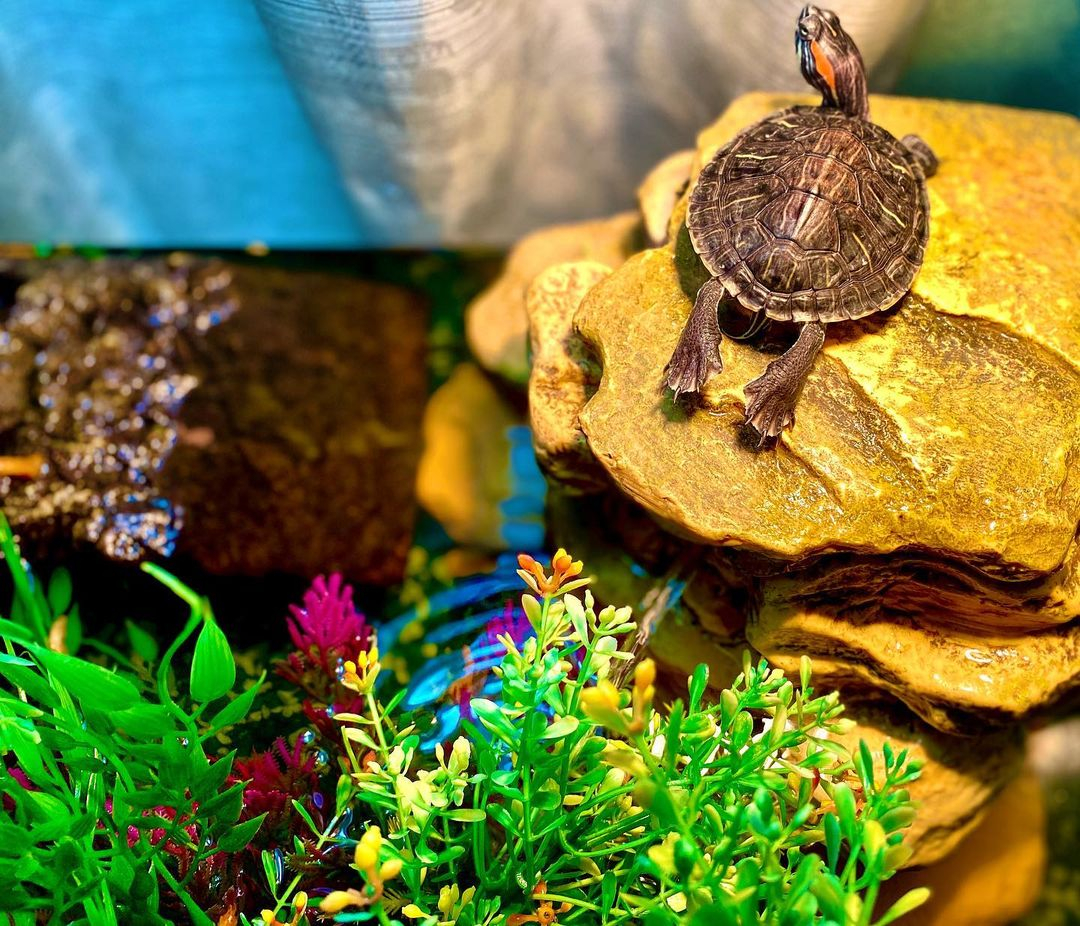
Adding live or artificial aquatic plants is a great way to boost the visual appeal of the enclosure while also creating hiding spots for the turtle. Turtle tank from @ underthesea_bt
Live or artificial aquatic plants can be added to enhance the aesthetics of the enclosure and provide hiding spots for the turtle. Decorative elements like rocks, driftwood, and caves can also be incorporated.
Hideouts:
Providing hiding spots in both the water and on the basking platform allows the turtle to feel secure and reduces stress.
Water Depth and Temperature:
Adjusting the water depth according to the species’ requirements is important. Monitoring and maintaining the water temperature within the recommended range is essential for the turtle’s well-being.
Paludarium
A paludarium is a distinct form of vivarium that integrates aspects from both terrestrial and aquatic surroundings, forming an environment that encompasses both land and water compartments. This configuration facilitates the establishment of a varied array of ecosystems within a unified enclosure. The term “paludarium” finds its origin in the Latin word “palus,” denoting marsh or swamp. Essential characteristics and components of a paludarium encompass:
Land and Water Interface:
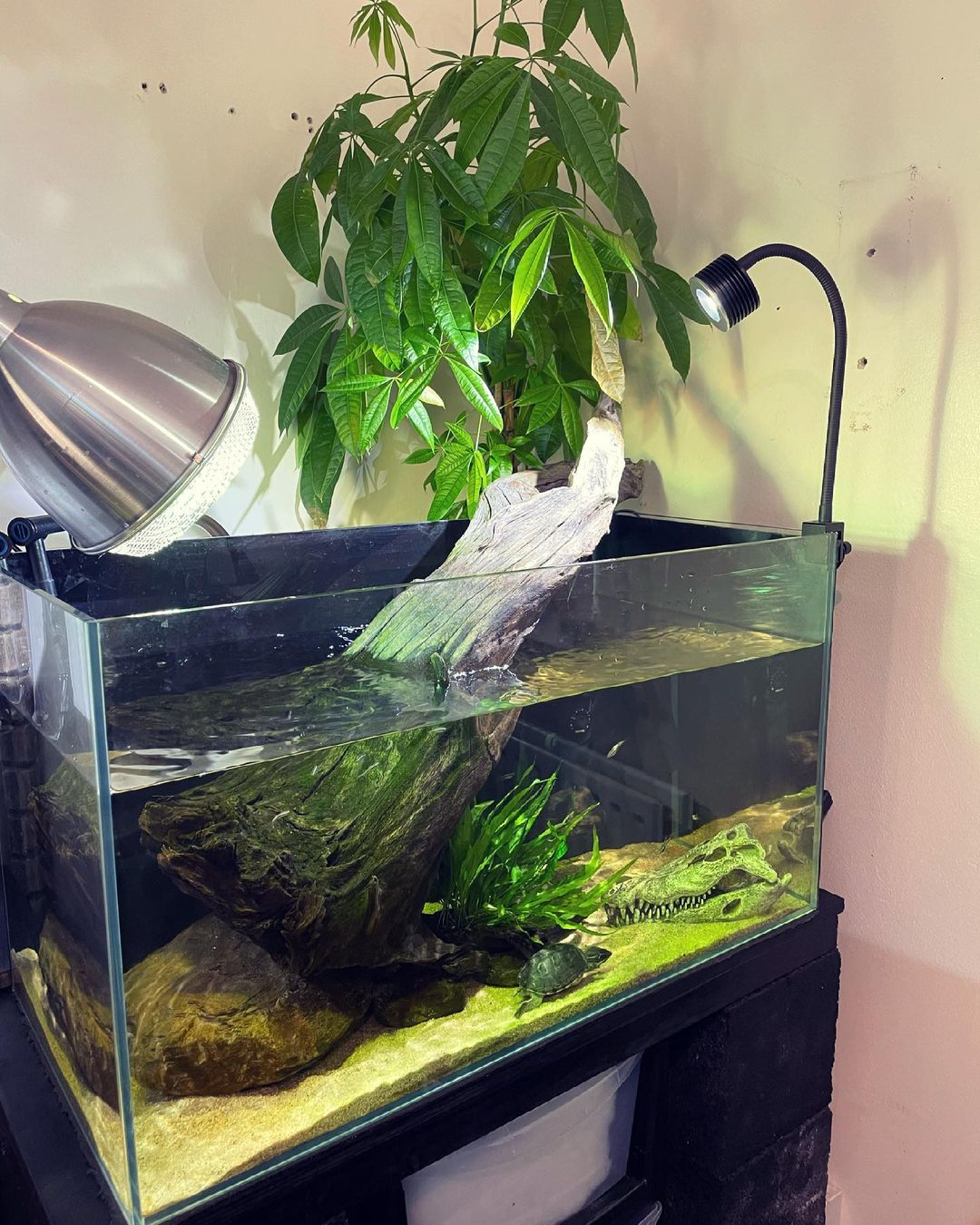
Paludarium creates a dynamic and diverse environment, ideal for animals that thrive in both terrestrial and aquatic habitats. Turtle habitat from @ aquaman_aquatics
A significant characteristic of a paludarium is the presence of both land and water areas within the same enclosure. This arrangement provides a dynamic and varied environment suitable for animals that enjoy both terrestrial and aquatic habitats.
Aquatic Area:
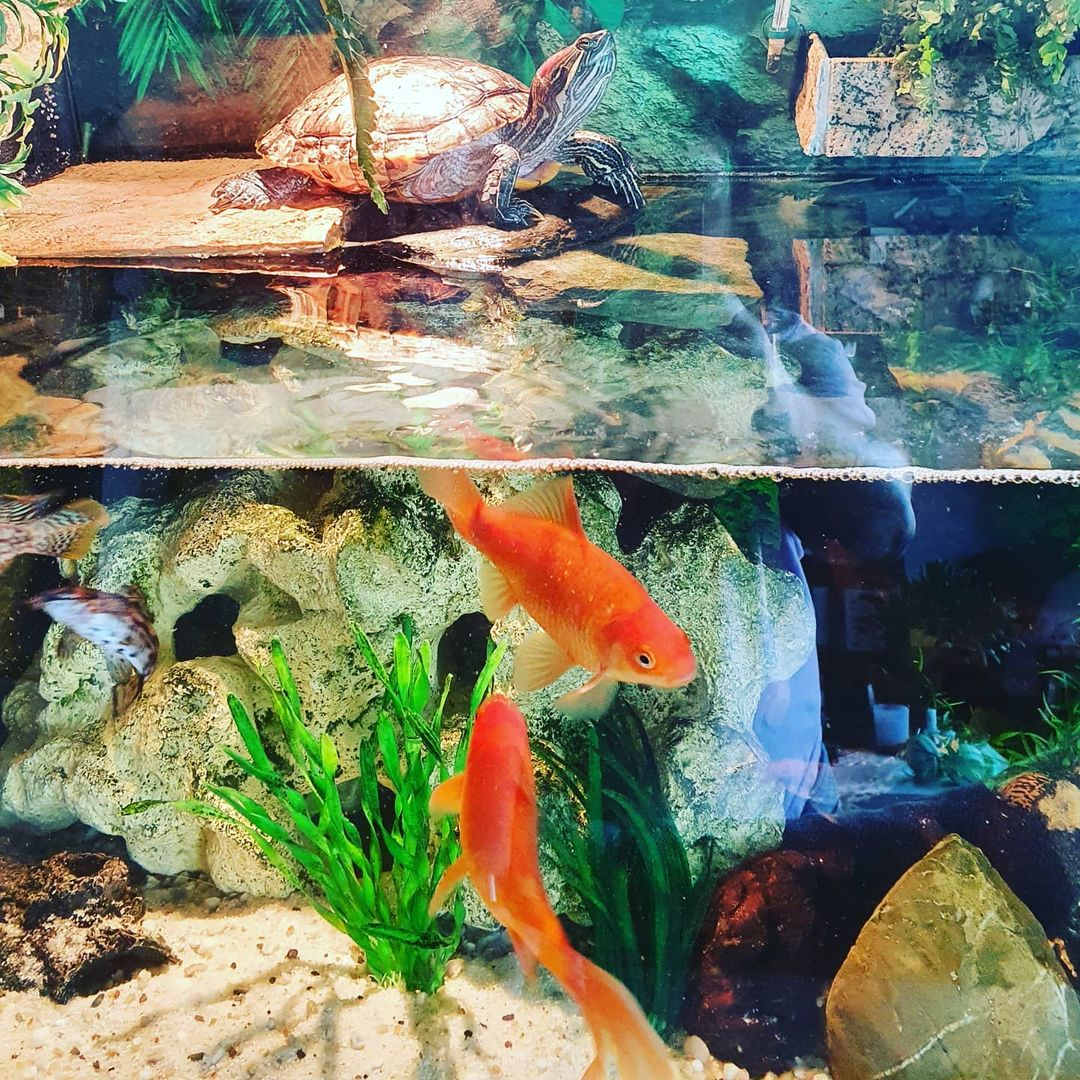
The water section of the paludarium is specifically crafted to house aquatic plants, fish, and other water-dwelling inhabitants. Terrarium from @ toto_stahl
The water section of the paludarium is designed to accommodate aquatic plants, fish, and other aquatic inhabitants. It may have varying water depths and features, such as rocks, driftwood, or aquatic vegetation.
Terrestrial Area:
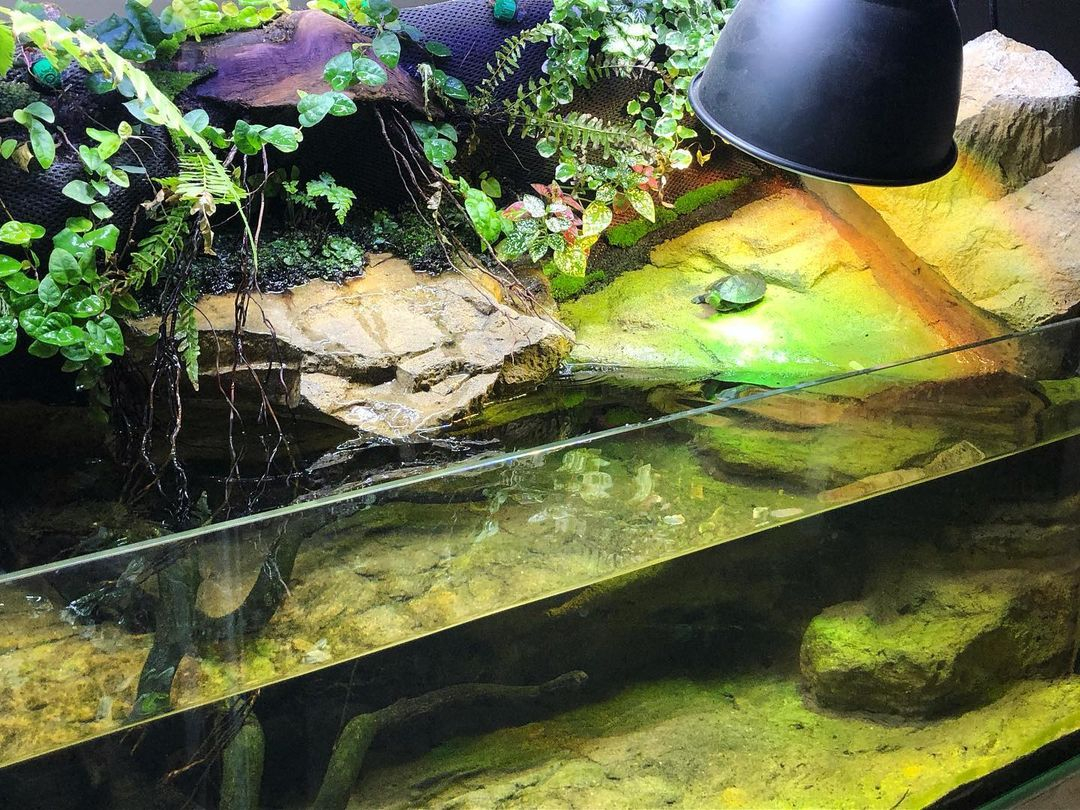
The terrestrial area supports the flourishing of land plants and offers a dry expanse for animals to wander, investigate, and bask in. Turtle habitat from @ doc.merten
The land portion allows for the growth of terrestrial plants and provides a dry space for animals to move, explore, and bask. The terrestrial area may include substrate for planting, rocks, branches, and other features.
Plant Life:
Live plants play a crucial role in a paludarium, contributing to both the aquatic and terrestrial sections. The combination of aquatic and terrestrial vegetation creates a visually appealing and naturalistic environment.
Humidity Control:
Due to the presence of water, paludariums naturally have higher humidity levels. This is beneficial for plants, and it can also be suitable for certain reptiles and amphibians that thrive in such conditions.
Lighting and Heating:
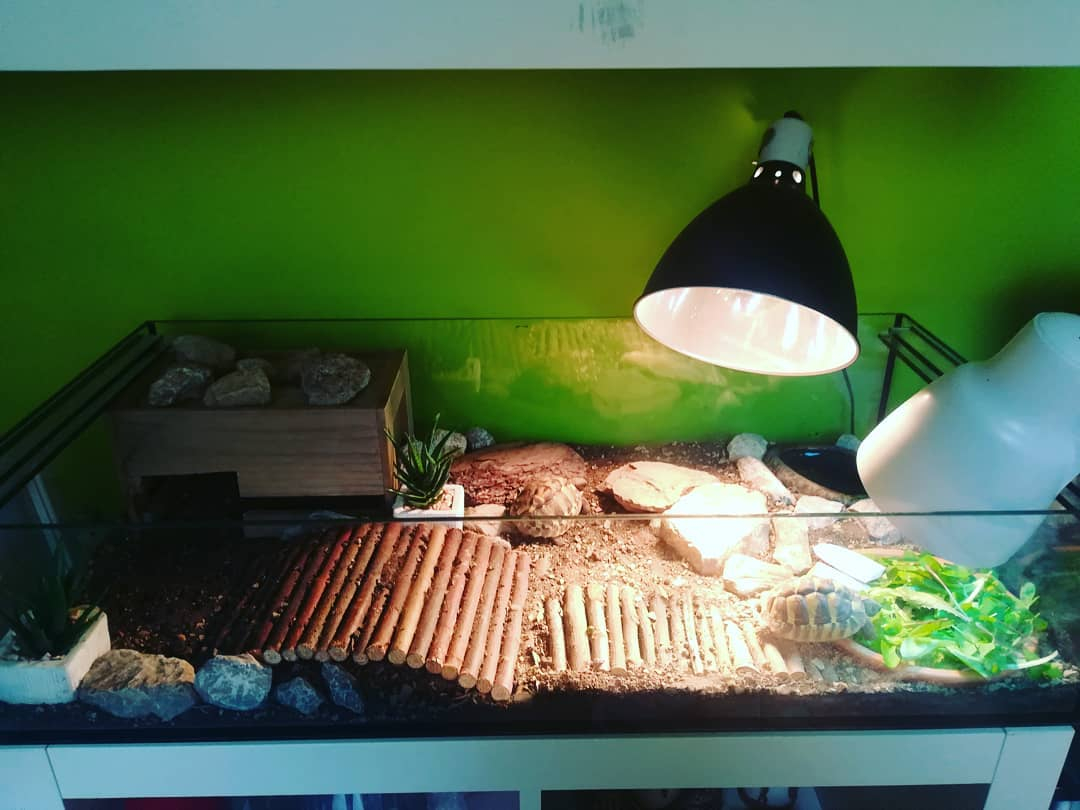
Sufficient lighting is crucial to promote the growth of plants in both the aquatic and terrestrial sections of the paludarium. Paludarium inspiration from @ hungaryturtlesadventures
Adequate lighting is essential to support the growth of plants in both the water and land areas. Heating elements may be used to maintain optimal temperatures for the inhabitants.
Animal Inhabitants:
Paludariums can house a variety of inhabitants, including amphibians, small reptiles, fish, and invertebrates. It provides a versatile environment that caters to the needs of different species.
Aesthetic Design:
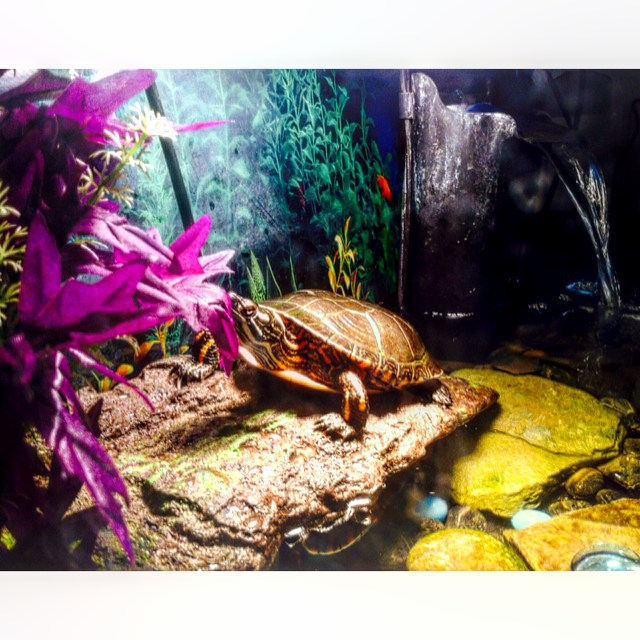
The blend of water features, vibrant vegetation, and thoughtfully arranged hardscape elements plays a significant role in enhancing the overall aesthetic charm of the enclosure. Beautiful turtle terrarium from @ saraforbes__
Many paludarium enthusiasts focus on creating visually appealing and naturalistic designs. The combination of water features, lush vegetation, and carefully arranged hardscape elements contributes to the overall aesthetic appeal of the enclosure.


